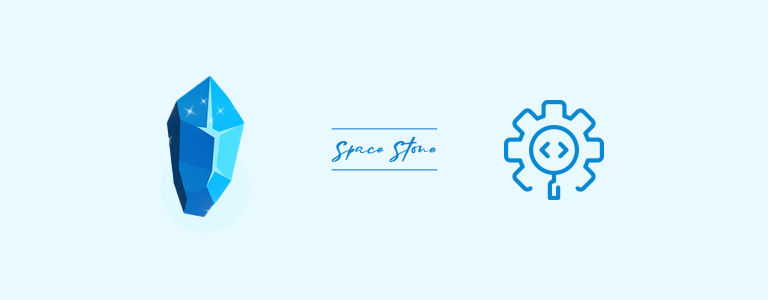The Pulse of the profession 2020 report revealed that nearly 11.4% of investment gets wasted because of poor project performance. Businesses, who often undervalue project management as a strategic competency for driving change, see their projects failing miserably. Managing a project can turn out to be a slippery slope when an organisation doesn’t have a solid grasp of all the moving pieces.

When it comes to managing a website development project, with so much at stake and so much in flux, adhering to best practices becomes immensely important. Drupal development is no different. From site-building to theming to backend development, doing everything right during the Drupal development process can be a formidable task. Every stage of the Drupal website development process should be taken care of in order to get the desired result. We call these stages as the Infinity Stones of Drupal development.
In Avengers film series, Infinity Stones are said to be the group of gems that can grant an unprecedented amount of power to their owner. Marvel Cinematic Universe timeline is packed with instances where these Infinity Stones are mentioned. The Drupal world has its own set of gems that, when put together in the right manner, can lead to better project delivery. These are the essentials that have to fall in place during the development period to ensure the best yield.
Requirement gathering and analysis (Reality Stone)

The Reality Stone helps its owner in manipulating matter. In Drupal development, the requirement gathering and analysis phase acts as the Reality Stone.
Here, you receive inputs from all the stakeholders such as customers, salespeople, industry experts and developers. All the relevant information is gathered from the customer to build a solution that meets their expectations.
For instance, by setting up a meeting, a lot of things can come to an agreement between client and vendor. A plenitude of factors, that will majorly affect different parties involved with the project, can be figured out. Questions like what’s the budget, what will be the deadline, who will be the end-user, what’s the purpose of the building this website and other such questions could be raised and discussed. This stage helps resolve any ambiguities that might become a problem later on.
Architecture and design (Mind Stone)

Using Mind Stone, an artificially intelligent peace-keeping program called Ultron was built. This powerful stone allowed its owner to control the minds of others. The architecture and design stage of Drupal development is equivalent to Mind Stone. Once you have gathered the requirement from all the stakeholders, the next stage involves the process of understanding what was exactly in the mind of stakeholders and deriving a functional architecture out of it. All the stakeholders can then analyse the design specification and offer their feedback and suggestions.
In this stage, several important questions can be pondered over like which of the core and contributed modules in Drupal can be utilised, should you go for Drupal 7 or Drupal 8 that will eventually decide the complexity of upgrade path to Drupal 9, should you go for headless approach etc. Any mistake that happens during the process of gathering stakeholders’ inputs and preparing the design and architecture plan would lead to cost overruns and project failure.
Development and implementation (Power Stone)

Someone, who has acquired the Power Stone, would receive a colossal amount of energy that can even be used to destroy an entire planet. Development and implementation stage is the Power Stone of Drupal website building process. Here, developers put in all their energies into the actual development process i.e. to turn visualisation into reality.
Implementation phase begins on the basis of the design document. The design is translated into source code. A surfeit of code reviews takes place. The coding process follows the best practices of Drupal development like creating a clean content architecture by including all the fields and content types in the content structures; or choosing limited content types and fields to make things easier for content creators; or creating separate issues and patches to update the existing code and so on.
Testing (Space Stone)

In Marvel films, there is a stone that is hidden inside a blue cube called the Tesseract. The Space Stone, as it is called, gives its owner the power over space. You can create a portal from one part of the universe to another. The testing phase is your Space Stone of Drupal development.
Testing phases begins once the coding gets completed. To find out every possible defect, testers have to open all the portals and do their magic. They have to keep a note of all the errors that they find during their intensive search in all of the portals. From preparing test cases to displaying the scope for more improvements in the user interface, user experience and speed, testers make a list of all the defects. These are then assigned to the developers to get them fixed. Regression testing is performed until the end product meets the client’s expectation.
Deployment (Soul Stone)

Capturing and controlling others’ souls would call for a Soul Stone. The deployment phase is the Soul Stone of Drupal website creation process. This is the phase where you have got the final output after countless hours of hard work and are ready to see the result. You have got complete control over the resulting website.
The Drupal website, that has been built after all the requirement gathering and coding processes, is deployed in the production environment (or first UAT (User Acceptance Testing) is done based on the client’s needs).
Maintenance and improvement (Time Stone)

Doctor Strange uses the Time Stone to trap a villain in a time loop and stop him from destroying the Earth. Whether you need to rewind or fast-forward the time, the Time Stone has got you covered.
The maintenance phase kicks in once the deployment is taken care of. This is the Time Stone of Drupal project management. In case any issue springs up during UAT tests or in the production environment, the developers can quickly rewind and check back the processes involved to find out where the error lies in. The improvement becomes easier as you go from incipient stage to the deployment stage or vice versa, find out the exact areas that are in need of enhancement or are under the threat of production downtime and act on it accordingly.
Project management (The Infinity Gauntlet)
The fancy golden glove, that Thanos wears with all the infinity stones fixed on it, is The Infinity Gauntlet. In Avengers, the Gauntlet, holding all the Infinity Stones, is the most sought-after thing. With all the stones united in the Gauntlet, its owner wields a massive amount of power. Project management is key to Drupal development and plays the role of Gauntlet. Like Thanos, with the snap of a finger, the project managers will be able to deliver the Drupal projects with ease if they ensure all the stages of Drupal development are followed accurately and effectively. Project managers are pivotal as they enable the application of knowledge, skills, tools and techniques to project activities so that the end result meets project requirements and ensures client satisfaction.
End thoughts
If Thanos, with his Gauntlet and the Infinity Stones on it, can become the most powerful being and go about destroying the universe, the Drupal project can benefit from its Infinity Stones too. The Infinity Stones of Drupal Development, starting from the requirement gathering and the designing to the deployment and the maintenance, if followed efficaciously, can make the process of creating a Drupal web property smoother and quicker.
With the presence of timely and efficient project management, everything falls in place. OpenSense Labs takes utmost care in adhering to best practices whilst developing a Drupal site. Ping us at [email protected] to know how we can bring all the Infinity Stones in its places and build an innovative Drupal website for your organisation.
Subscribe
Related Blogs
Inside the Drupal AI Summit: Themes, Speaker and What To Expect

“ The web is changing fast, and AI is rewriting the rules. It writes content, builds pages, and answers questions directly,…
FOST and Drupal AI Initiative: Next Era of Responsible AI

Three years after the launch of generative AI tools marked a new age for artificial intelligence, almost 90% of survey…
Drupal AI Ecosystem Part 5: AI Content Suggestions

Drupal has steadily evolved from being just a content management system into a flexible platform that incorporates emerging…




